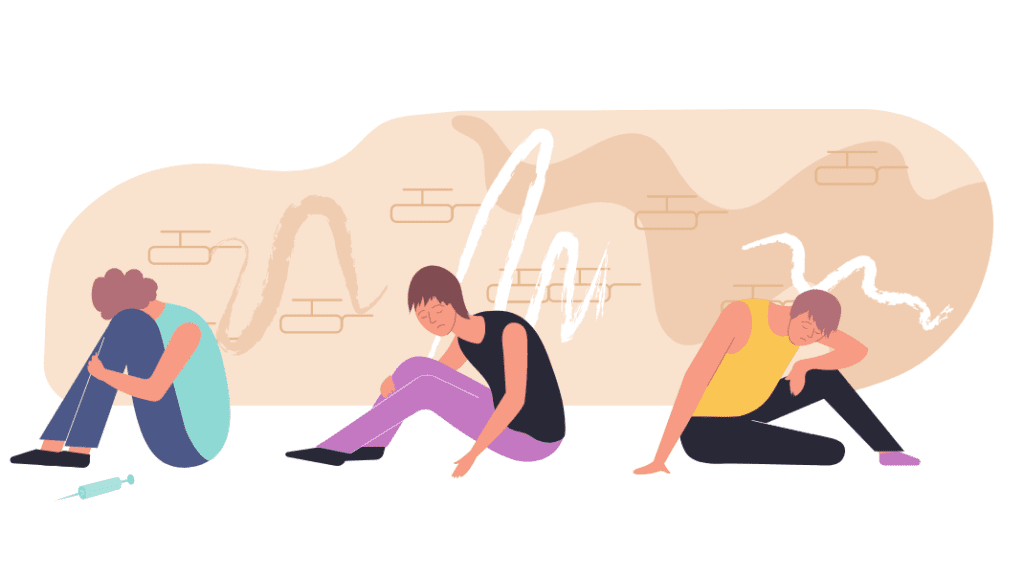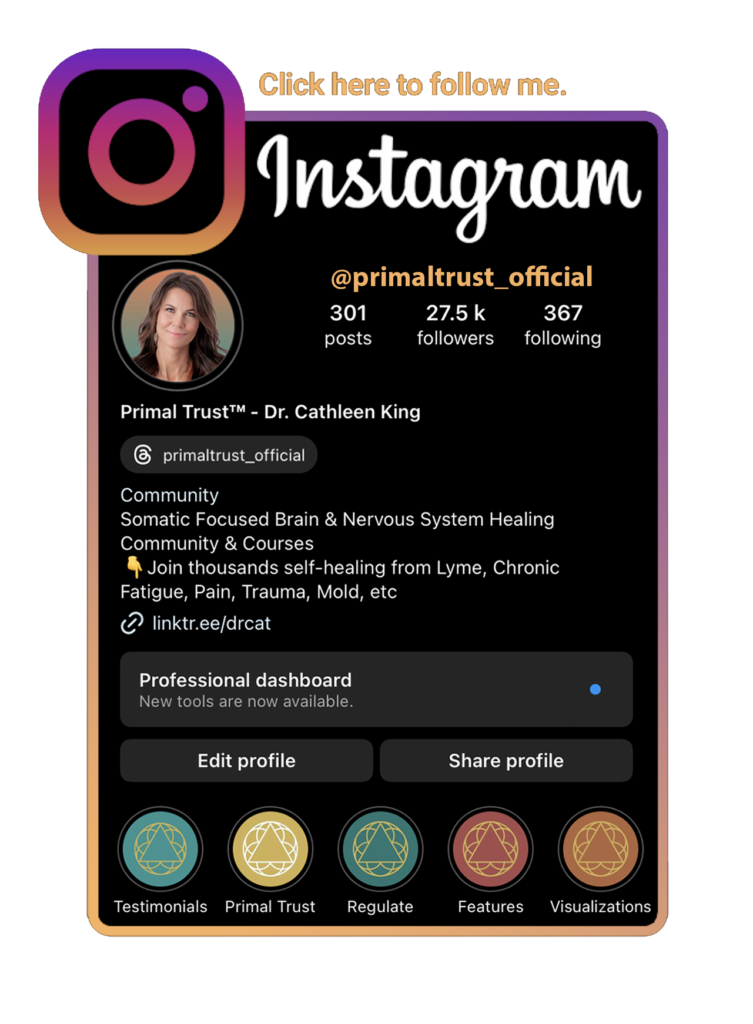Rather listen? Go to blog reading.

I was an “emotion-aholic” for 40 years. I didn’t know it though. I didn’t think I carried the traits of addiction that my family origin had from severe drug addiction and alcoholism. And one day, a friend who was going through Al-anon, described to me traits of children raised by alcoholics, that end up having a strong addiction to drama and emotion. She described how alcoholism can become a family disease and manifest as an “emotion-aholic”.
I was a perfect example of her description. Well shit, I thought, I guess the addiction pathway continued in me, but in a different way.
I was always “processing”. I was always upset, mad, scared, sad, etc. Every day, I was emotionally flooded. Obviously, I had limbic system impairment and chronic illness as well which made things worse.
But the ‘ah-ha’ in this information of linking children of alcoholics that can become emotion-aholics was this: I had an addiction to drama. I had an addiction to producing strong emotions. Why? Because I was around drama and strong emotions ALL THE TIME as a child. And so my biology and cellular receptors adapted to that and then became accustomed to, and needy of, strong emotional biochemistry.
This issue showed up for me in a few key ways that I have had to really work hard to break the pattern of. If this is familiar, take a breath of self-compassion, it’s not your fault, it’s a response ingrained in your nervous system because of the environment you grew up in.
I’m going to be incredibly transparent here, and tell on myself. We release hidden shame by owning that which we consciously or unconsciously despise about ourselves.
This is how “emotion-aholism” showed up in me:

- Wanting to control the emotions of those around me. I had ‘strategies’ as an adult to keep those around me from expressing their anger, sadness, disappointment, etc to me because I couldn’t handle the way it made ME feel. When people would express their criticism or even be emotional about things that had NOTHING to do with me, I would not be able to hold space for them or be around them. I passed down the generational pattern of “stuff your emotions, don’t make me feel worse than I already do.” I hated myself for how this came out around my children.
I often couldn’t hold space for their crying, anger, tantrums. I would often want to shush them or go away to my room, rather than sit with them and allow them to express themselves because it would make me feel crazy/out of control inside of me. Sometimes, I couldn’t stop my own anger from overpowering their emotional meltdown. And then I was filled with shame for passing down the family legacy of “be quiet, and don’t upset me anymore or I’ll yell at you or leave.” I’ve really had a lot of shame about this coping strategy of mine. - I always made my emotional experience the dominant experience of my relationship or my home. I unconsciously had to get my ‘emotional fix’ each day by obsessing on what was wrong with me, my body, the world, my partner, my kids, etc. I could feel the almost drug-like dependence of the emotional flood, and I felt powerless to stop it.
I often unconsciously played out my victim perceptions of my reality to everyone, flooding myself with painful emotions and hoping to get sympathy or validation from them. I was trying to resolve my old wounding: “I’m so sad, bad things are happening to me and around me. Please see it! Please hear it! I hate being alone in this.”
When I finally, consciously saw what I was doing, I started to have compassion for this memory activation dominating my emotional life. I just wanted to be validated for my suffering. So I engaged in a cycle of suffering and sought out validation in many forms. - I was engaged in endless processing courses, practitioners, healing circles, shamanic journeys, energy practices for 15 years. I loved them, being a type-4 of the Enneagram for those of you who know what that is. Mostly I loved them because I got to flood my body with emotions every time I did “process work”, thinking I was resolving my issues, and got a great cathartic “fix” afterward.
In actuality, I was just reliving my drama story, and not resolving the emotions at all, because I wasn’t processing my story from an empowered adult perspective. It took a while for me to gain enough discernment about this. And now I see the difference between reliving my story, and pure experience of the suppressed emotions and being able to truly let them go, no story attached.

These examples describe the surface of how alcoholism/abuse/drama showed up for me as an adult. And you might wonder how I broke out of the cycle. I broke out by having a few key people help me to see that I WAS ADDICTED TO CHAOS on a cellular level, and that I had to be the dominant source of emotional expression in my home to feel safe and in control. I also had to develop deep self-compassion to override the shame I had at this revelation of what I was passing down to my young children. I had to forgive myself for contributing to the shutdown and numbing of my partner and my kids. And I’m still forgiving myself for that time period in my life. It was a complex time. I had chronic Lyme disease and mental health challenges, and I was awaking to the trauma within me to transmute it, but I didn’t know how yet.
Some of those who grow up in this situation have the opposite effect, they go into dorsal vagal shutdown and end up suppressing their emotions and feeling flat and numb. That is the flip side of the coin of adaptation to alcoholism, “I won’t feel anything”. This happens when there isn’t appropriate attunement with an adult to process the intense emotional flooding. Without attunement, we “tune out”. This too requires a process of awareness of coping strategies that need to be transmuted, attunement that needs to occur, and emotions that need to be processed.
Beginning tips to work through this patterning are:
- Notice when you are feeling an urge to express your emotions. What is your intention? Can you tell if you are getting emotionally flooded with a “need” to let it out? Can you find a way to be with it and breathe through it vs expressing your suffering to others?
- Notice when you are trying to blame another or get them to stop having their feelings, especially by making them wrong for their feelings. Again, can you sit with this awareness of being triggered that they are upset or whatever and let it be, knowing it’s not your responsibility to direct their emotional experience.
- When you are expressing anger, fear, sadness, can you find an underlying emotion that is getting overlooked and not expressed? Maybe it’s grief, shame, guilt. Can you hold space for yourself to breathe through the initial dominant emotion long enough to experience what’s underneath it? And then hold space for that.
- Own your emotional addiction and transference with your family and kids. I had to do this a lot. I couldn’t always catch myself in the moment but I got really good at coming back to my kids or partner and saying “I wanted to stop your emotion because it made me uncomfortable and it triggered shame/guilt in me. I’m sorry. Please express how you feel, I want to listen and hold space for you.” Or also I would say “I’m sorry I dumped my emotional turmoil all over you instead of taking self-responsibility to be with my own emotional experience and untether from the negative stories I’m telling in my head. Please forgive me as I learn to do differently.”
- Gain an understanding of the principles of the polyvagal theory, or the state of your nervous system’s stress response, and learn strategies to move into attunement, both with yourself and with your environment.
Learning strategies to find safety ultimately helps us be able to be with our intense inner emotional world and process what we were not able to as a child. I believe brain retraining and nervous system regulation tools are foundational for transformation from these types of issues.
If this sounds like you, there is hope. It starts with awareness. There are people and programs that can guide you. My Primal Trust™ program was partly patterned after this journey I had to take to resolve emotional processing issues. I’ve learned to delicately weave neuroplasticity, polyvagal theory, and inner attachment repair together. Although I specialize in chronic illness, anyone with a chronic stress pattern can benefit from carving the neuropathways of Primal Trust. My collaborative platform is a membership that allows you to either take yourself through the journey at your own pace or participate in live classes with others. Please reach out if you have questions about whether or not this program is a fit for you.
In service to your transformation, freedom, and primal trust embodiment,
Dr Cat
Insta: @drcathleenking




